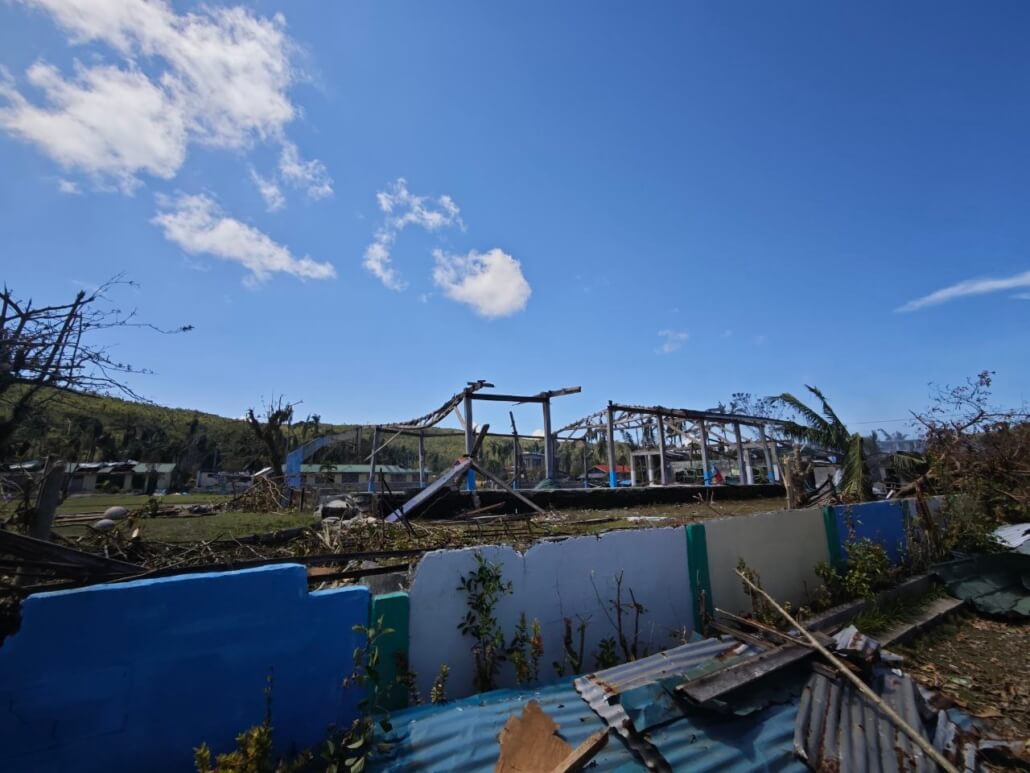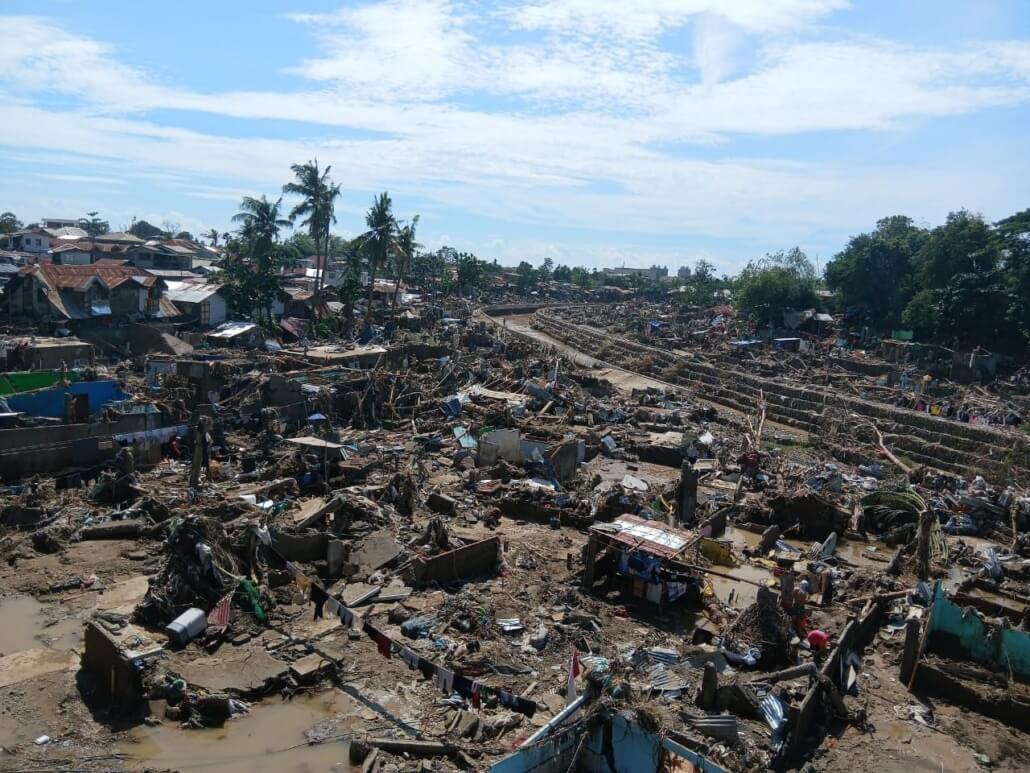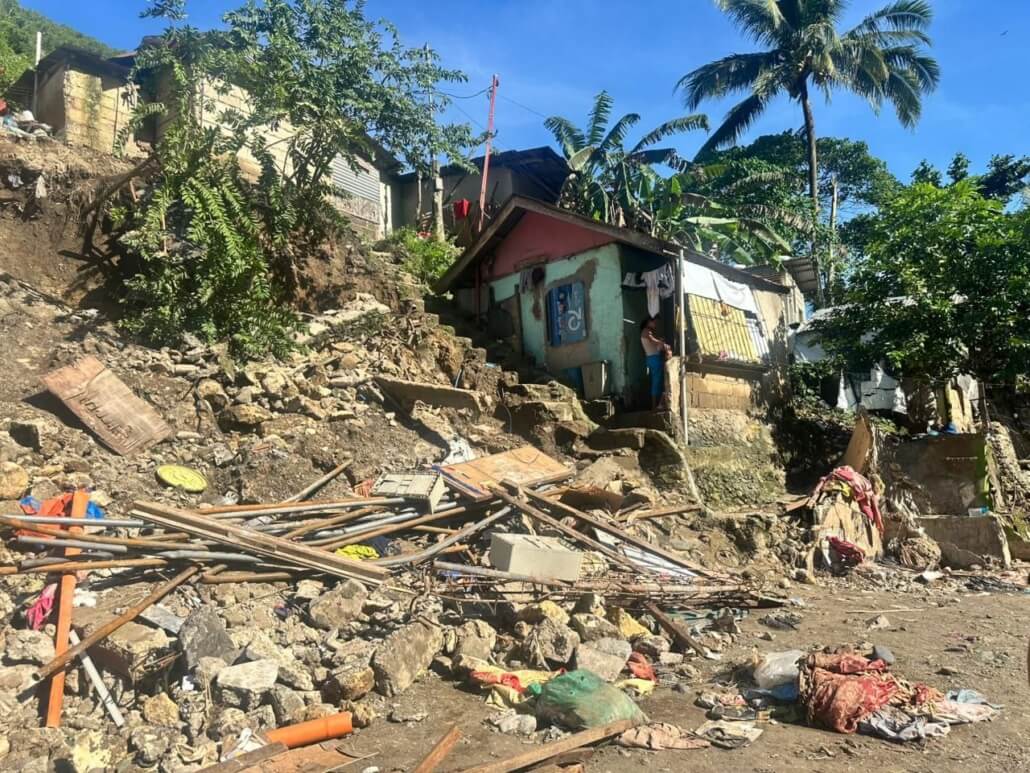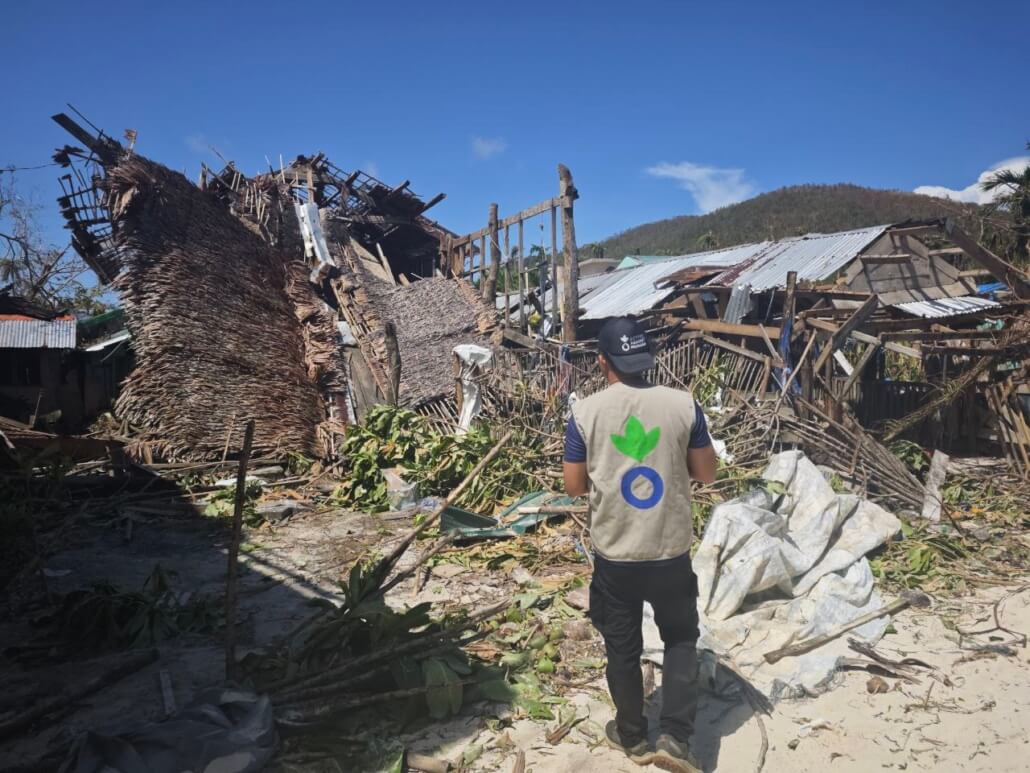Philippines in state of national calamity after Typhoon Tino (Kalmaegi) leaves widespread devastation
Barely recovering from a series of calamities in the last month, another disaster, Typhoon Tino (international name: Kalmaegi), caused extensive destruction across several regions in the Philippines. After intensifying into a typhoon on 3 November 2025, Tino moved across the Visayas and Caraga regions before exiting the Philippine Area of Responsibility, leaving widespread displacement and severe damage behind. Typhoon Tino marks as the 20th storm to hit the Philippines this year alone.
More than 2.6 million people, or around 746,000 families, have been affected nationwide, based on government reports as of 7 November 2025. Of these, more than 1.4 million people are reportedly displaced and currently staying in evacuation centers or with relatives. At least 188 people have died, 135 remain missing, and more than 137 have been injured. Authorities caution that these figures may rise as assessments continue, and as access to remote areas improves.
The regions of Western Visayas (Region 6), Central Visayas (Region 7), and Caraga (Region 13) sustained the most severe impacts.
- In Western Visayas, the provinces of Aklan, Capiz, and Iloilo reported the largest number of displaced families, with Capiz alone accounting for 55,310 families (163,799 individuals). Evacuations were conducted across several municipalities and Roxas City, where significant housing damage is being verified by local authorities.
- In Central Visayas, Cebu Province, now under a State of Calamity, has recorded 87,504 affected families (271,336 individuals) across 38 municipalities and cities. The province also reported 92 deaths, including 36 in Liloan. Widespread power and water supply interruptions persist, while food and sanitation shortages are worsening conditions in evacuation centers. In some communities, residents have been forced to collect water from natural sources, and the destruction of toilets has increased public health risks.

In photos: Emergency Response team assess damages in Barangay Liberty Hibusong Island, Loreto, Province of Dinagat Islands. (Photos by Jaz Dajuya for Action Against Hunger)
- In Caraga, the Dinagat Islands have also declared a State of Calamity after 11,019 families (32,431 individuals) were displaced, representing about 36% of the province’s population. The typhoon severely damaged infrastructure and disrupted essential utilities, especially in the municipalities of Loreto and Tubajon. Two fatalities were recorded in Loreto due to storm surges. Preliminary reports indicate 4,497 houses were totally destroyed and 2,887 partially damaged, based on initial assessments. Cases of leptospirosis and diarrheal illness have also been reported, particularly in flood-affected areas.
Cebu is still reeling from the magnitude 6.9 earthquake that struck on September 30 and continues to experience aftershocks and tremors in recent weeks. Now, the province faces yet another challenge as one of the areas most affected by Typhoon Tino. Many families whose homes were damaged by the earthquake remain in temporary shelters and tents. The typhoon has further worsened their situation, bringing heavy rains and strong winds that left most of the province without electricity and telecommunications signal for days, with some areas still awaiting restoration. These conditions have heightened the risks and deepened the vulnerability of affected families as they struggle to recover from successive disasters.

In Talisay City, Cebu, Action Against Hunger teams are on the ground assessing the impact of Typhoon Tino. Initial findings indicate that six barangays were among the most affected, with damage to homes, water systems, and health centers. In coordination with the local government, the team is conducting rapid assessments and supporting efforts to assist affected families and restore essential services. (Photo by Vicente Delector Jr. for Action Against Hunger).
“As I move through the affected communities, I’ve seen firsthand how devastating the compounded impacts of the earthquake and Typhoon Tino are—days without water or electricity, homes and livelihoods lost, and families trying to rebuild while already wondering how to prepare for the next disaster. These moments underscore how critical it is to invest in long-term resilience so communities can withstand the escalating effects of a changing climate,” shares Cristina Izquierda Ribas, Nutrition Coordinator, Emergency Team and OIC-Head of Cebu field office for Action Against Hunger Philippines.

In photo: Damages in Talisay Cebu. (Photo by Vicente Delector Jr. for Action Against Hunger).
The humanitarian situation remains critical as hundreds of thousands of families remain displaced. Assessments of damage to homes, roads, bridges, schools, and health facilities are still ongoing, but initial reports indicate moderate to heavy destruction across affected provinces.
Key immediate needs include:
- Food assistance and early livelihood support to meet basic needs and prevent negative coping mechanisms.
- Safe drinking water, hygiene kits, and temporary sanitation facilities to address contamination of water sources and prevent disease outbreaks.
- Emergency shelter materials such as tarpaulins, tents, blankets, and cooking sets to support families who lost their homes.
Moreover, protection and privacy concerns are also increasing in overcrowded evacuation centers, with women, children, the elderly, and persons with disabilities particularly at risk due to limited space and unsafe conditions.
In response to the widespread devastation, the Philippine Government has declared a State of National Calamity and released 760 million pesos in assistance to affected regions. National agencies, local governments, and humanitarian organizations have mobilized to deliver life-saving aid, restore basic services, and coordinate damage assessments.
While responding to overlapping emergencies such as the earthquakes in Cebu and Davao and the impacts of Typhoons Opong and Tino, the Philippines is now bracing for another potential disaster as Super Typhoon Uwan (international name: Fung-wong) is expected to affect parts of Luzon and Visayas on Monday, November 11.
Action Against Hunger Philippines continues to monitor the evolving situation and coordinate closely with partners, including the Office of Civil Defense (OCD), the Department of Health (DOH), the WASH Cluster, and the EU Civil Protection and Humanitarian Aid-funded ACCESS Consortium. Since November 5, our emergency response teams have been deployed to conduct Rapid Damage and Needs Assessments in Cebu, Surigao del Norte, and the Dinagat Islands to guide the prioritization of emergency relief and early recovery interventions.
Our team continues to monitor the trajectory of Typhoon Uwan alongside ongoing emergency response operations to ensure timely and coordinated action for affected communities.
We are actively engaging with our resource partners to secure additional funding for our Typhoon Tino response, while jumpstarting small-scale initial interventions by pivoting available resources. Our planned response will focus on Cebu and Dinagat Islands, while we continue conducting assessments in coordination with partners and local government units.





